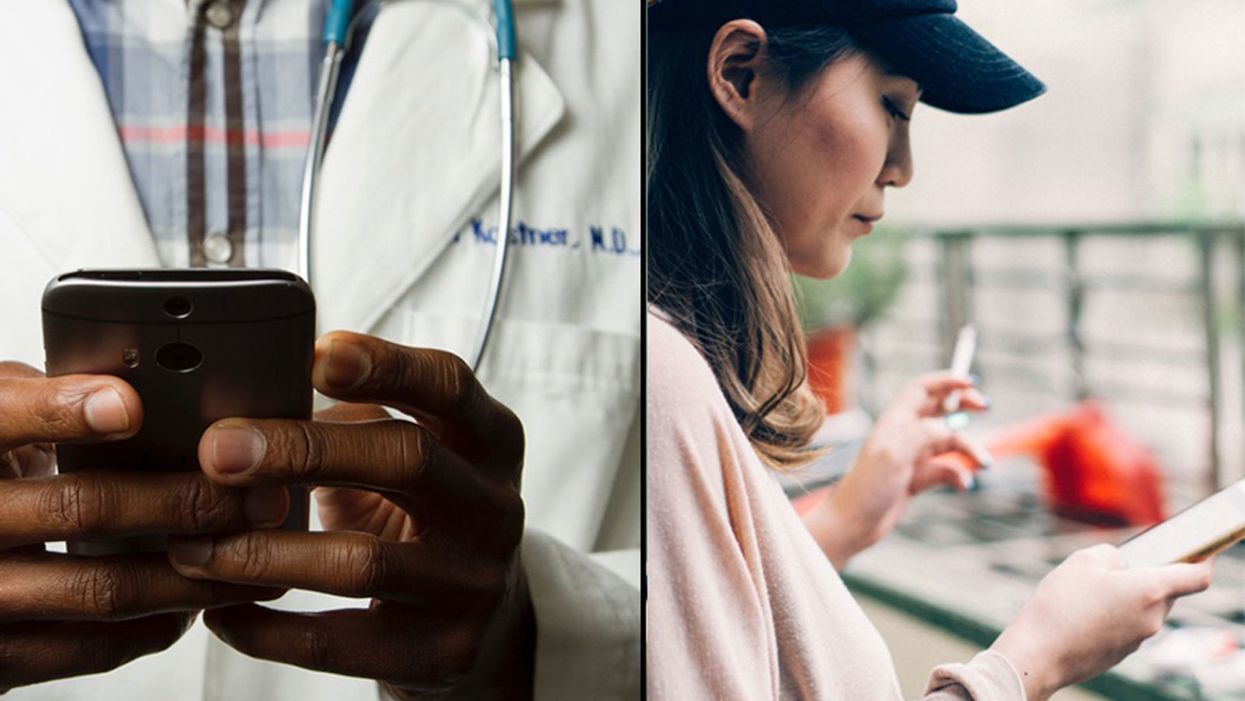Health breakthroughs of 2022 that should have made bigger news

Nine experts break down the biggest biotech and health breakthroughs that didn't get the attention they deserved in 2022.
As the world has attempted to move on from COVID-19 in 2022, attention has returned to other areas of health and biotech with major regulatory approvals such as the Alzheimer's drug lecanemab – which can slow the destruction of brain cells in the early stages of the disease – being hailed by some as momentous breakthroughs.
This has been a year where psychedelic medicines have gained the attention of mainstream researchers with a groundbreaking clinical trial showing that psilocybin treatment can help relieve some of the symptoms of major depressive disorder. And with messenger RNA (mRNA) technology still very much capturing the imagination, the readouts of cancer vaccine trials have made headlines around the world.
But at the same time there have been vital advances which will likely go on to change medicine, and yet have slipped beneath the radar. I asked nine forward-thinking experts on health and biotech about the most important, but underappreciated, breakthrough of 2022.
Their descriptions, below, were lightly edited by Leaps.org for style and format.
New drug targets for Alzheimer’s disease

Professor Julie Williams, Director, Dementia Research Institute, Cardiff University
Genetics has changed our view of Alzheimer’s disease in the last five to six years. The beta amyloid hypothesis has dominated Alzheimer’s research for a long time, but there are multiple components to this complex disease, of which getting rid of amyloid plaques is one, but it is not the whole story. In April 2022, Nature published a paper which is the culmination of a decade’s worth of work - groups all over the world working together to identify 75 genes associated with risk of developing Alzheimer’s. This provides us with a roadmap for understanding the disease mechanisms.
For example, it is showing that there is something different about the immune systems of people who develop Alzheimer’s disease. There is something different about the way they process lipids in the brain, and very specific processes of how things travel through cells called endocytosis. When it comes to immunity, it indicates that the complement system is affecting whether synapses, which are the connections between neurons, get eliminated or not. In Alzheimer’s this process is more severe, so patients are losing more synapses, and this is correlated with cognition.
The genetics also implicates very specific tissues like microglia, which are the housekeepers in the brain. One of their functions is to clear away beta amyloid, but they also prune and nibble away at parts of the brain that are indicated to be diseased. If you have these risk genes, it seems that you are likely to prune more tissue, which may be part of the cell death and neurodegeneration that we observe in Alzheimer’s patients.
Genetics is telling us that we need to be looking at multiple causes of this complex disease, and we are doing that now. It is showing us that there are a number of different processes which combine to push patients into a disease state which results in the death of connections between nerve cells. These findings around the complement system and other immune-related mechanisms are very interesting as there are already drugs which are available for other diseases which could be repurposed in clinical trials. So it is really a turning point for us in the Alzheimer’s disease field.
Preventing Pandemics with Organ-Tissue Equivalents
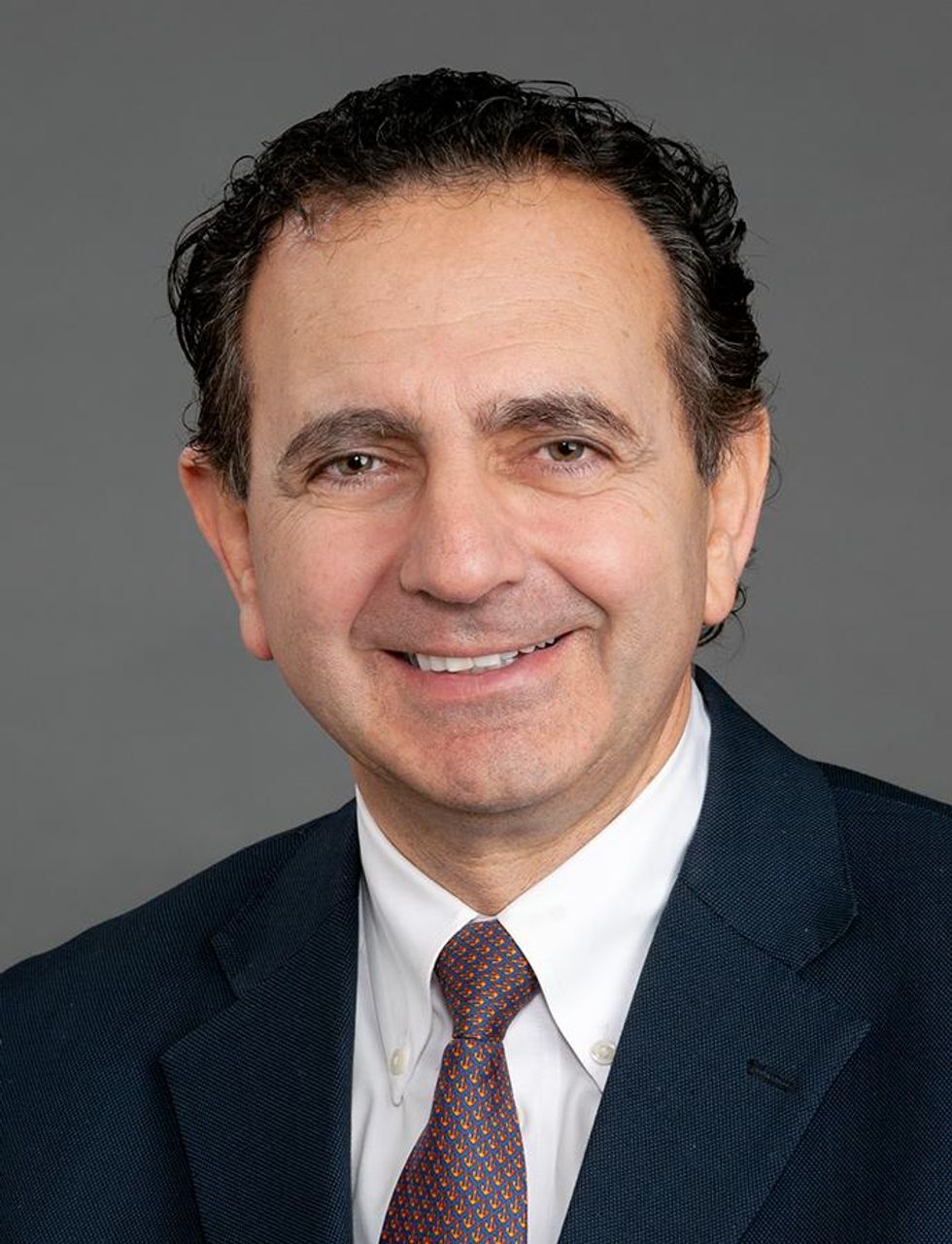
Anthony Atala, Director of the Wake Forest Institute for Regenerative Medicine
COVID-19 has shown us that we need to be better prepared ahead of future pandemics and have systems in place where we can quickly catalogue a new virus and have an idea of which treatment agents would work best against it.
At Wake Forest Institute, our scientists have developed what we call organ-tissue equivalents. These are miniature tissues and organs, created using the same regenerative medicine technologies which we have been using to create tissues for patients. For example, if we are making a miniature liver, we will recreate this structure using the six different cell types you find in the liver, in the right proportions, and then the right extracellular matrix which holds the structure together. You're trying to replicate all the characteristics of the liver, but just in a miniature format.
We can now put these organ-tissue equivalents in a chip-like device, where we can expose them to different types of viral infections, and start to get a realistic idea of how the human body reacts to these viruses. We can use artificial intelligence and machine learning to map the pathways of the body’s response. This will allow us to catalogue known viruses far more effectively, and begin storing information on them.
Powering Deep Brain Stimulators with Breath
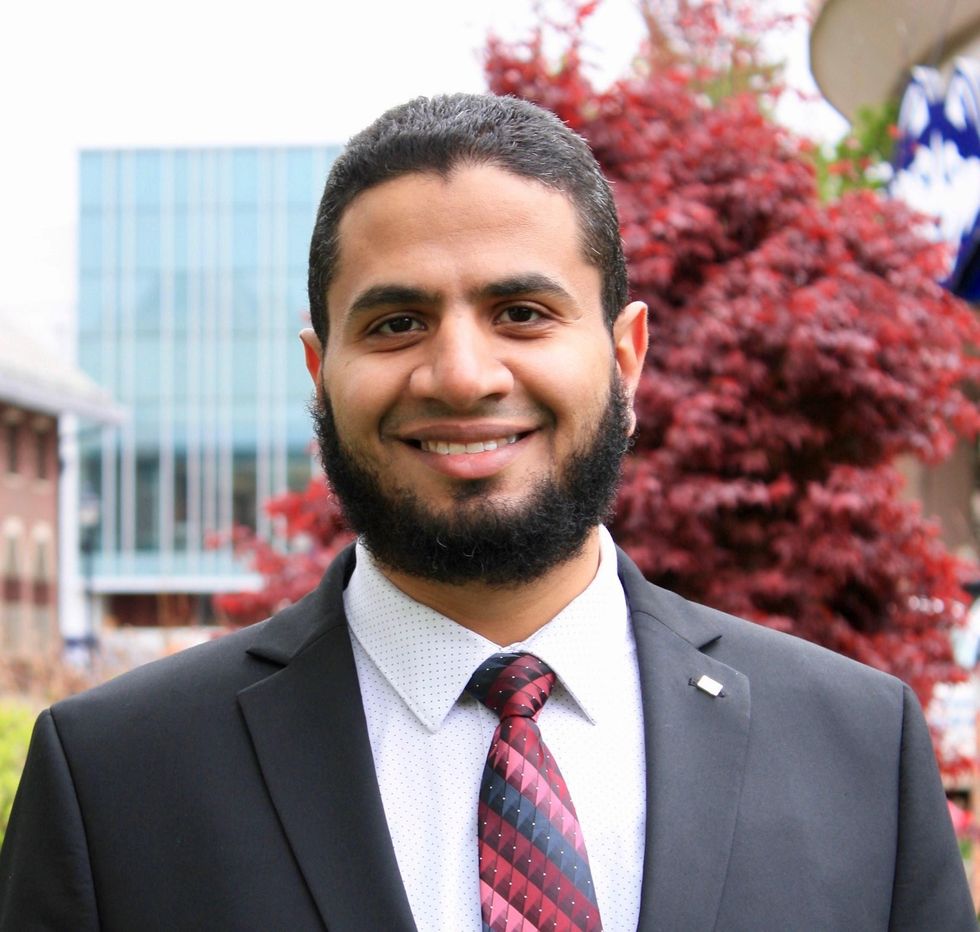
Islam Mosa, Co-Founder and CTO of VoltXon
Deep brain stimulation (DBS) devices are becoming increasingly common with 150,000 new devices being implanted every year for people with Parkinson’s disease, but also psychiatric conditions such as treatment-resistant depression and obsessive-compulsive disorders. But one of the biggest limitations is the power source – I call DBS devices energy monsters. While cardiac pacemakers use similar technology, their batteries last seven to ten years, but DBS batteries need changing every two to three years. This is because they are generating between 60-180 pulses per second.
Replacing the batteries requires surgery which costs a lot of money, and with every repeat operation comes a risk of infection, plus there is a lot of anxiety on behalf of the patient that the battery is running out.
My colleagues at the University of Connecticut and I, have developed a new way of charging these devices using the person’s own breathing movements, which would mean that the batteries never need to be changed. As the patient breathes in and out, their chest wall presses on a thin electric generator, which converts that movement into static electricity, charging a supercapacitor. This discharges the electricity required to power the DBS device and send the necessary pulses to the brain.
So far it has only been tested in a simulated pig, using a pig lung connected to a pump, but there are plans now to test it in a real animal, and then progress to clinical trials.
Smartwatches for Disease Detection

Jessilyn Dunn, Assistant Professor in Duke Biomedical Engineering
A group of researchers recently showed that digital biomarkers of infection can reveal when someone is sick, often before they feel sick. The team, which included Duke biomedical engineers, used information from smartwatches to detect Covid-19 cases five to 10 days earlier than diagnostic tests. Smartwatch data included aspects of heart rate, sleep quality and physical activity. Based on this data, we developed an algorithm to decide which people have the most need to take the diagnostic tests. With this approach, the percent of tests that come back positive are about four- to six-times higher, depending on which factors we monitor through the watches.
Our study was one of several showing the value of digital biomarkers, rather than a single blockbuster paper. With so many new ideas and technologies coming out around Covid, it’s hard to be that signal through the noise. More studies are needed, but this line of research is important because, rather than treat everyone as equally likely to have an infectious disease, we can use prior knowledge from smartwatches. With monkeypox, for example, you've got many more people who need to be tested than you have tests available. Information from the smartwatches enables you to improve how you allocate those tests.
Smartwatch data could also be applied to chronic diseases. For viruses, we’re looking for information about anomalies – a big change point in people’s health. For chronic diseases, it’s more like a slow, steady change. Our research lays the groundwork for the signals coming from smartwatches to be useful in a health setting, and now it’s up to us to detect more of these chronic cases. We want to go from the idea that we have this single change point, like a heart attack or stroke, and focus on the part before that, to see if we can detect it.
A Vaccine For RSV
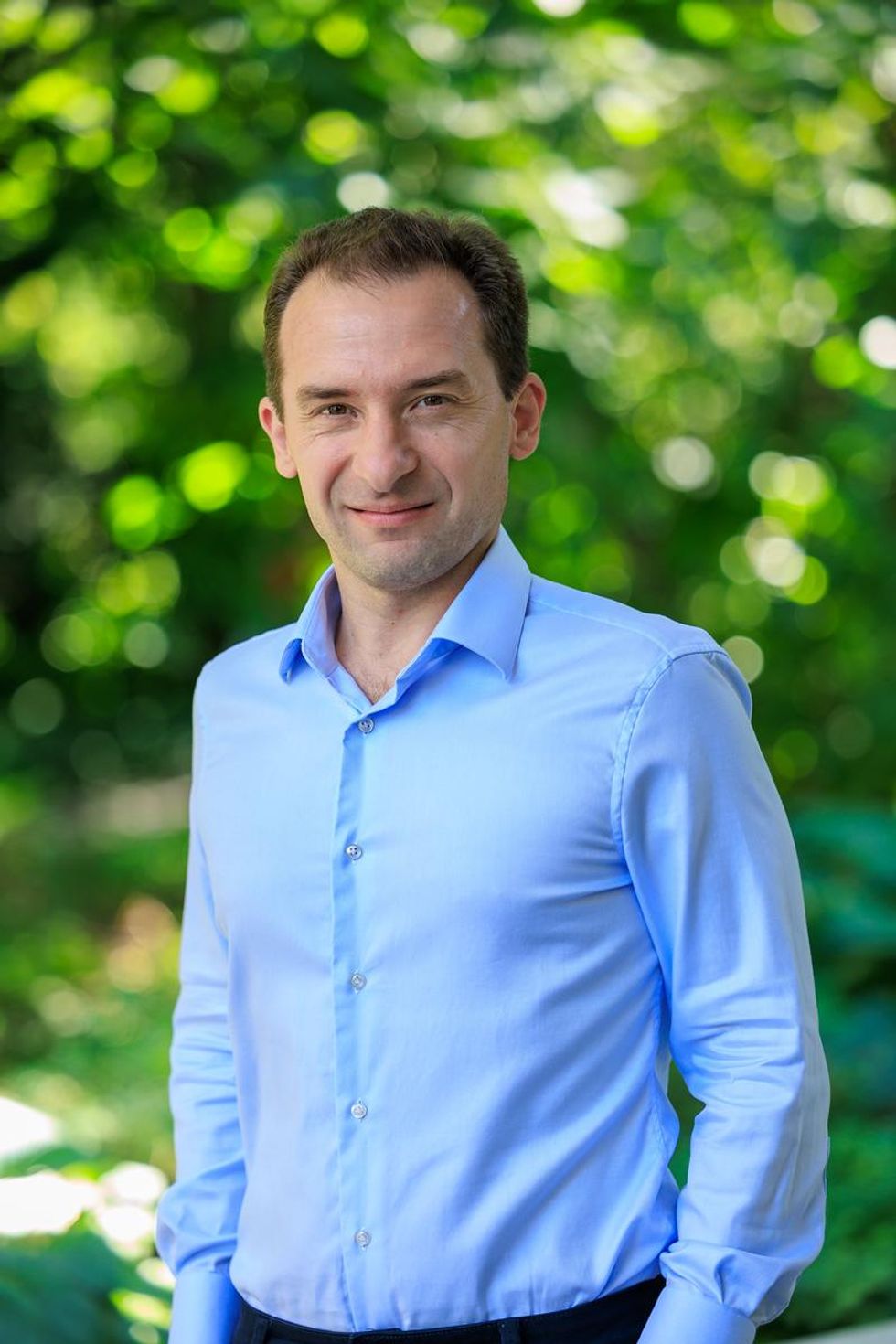
Norbert Pardi, Vaccines Group Lead, Penn Institute for RNA Innovation, University of Pennsylvania
Scientists have long been trying to develop a vaccine for respiratory syncytial virus (RSV), and it looks like Pfizer are closing in on this goal, based on the latest clinical trial data in newborns which they released in November. Pfizer have developed a protein-based vaccine against the F protein of RSV, which they are giving to pregnant women. It turns out that it induces a robust immune response after the administration of a single shot and it seems to be highly protective in newborns. The efficacy was over 80% after 90 days, so it protected very well against severe disease, and even though this dropped a little after six month, it was still pretty high.
I think this has been a very important breakthrough, and very timely at the moment with both COVID-19, influenza and RSV circulating, which just shows the importance of having a vaccine which works well in both the very young and the very old.
The road to an RSV vaccine has also illustrated the importance of teamwork in 21st century vaccine development. You need people with different backgrounds to solve these challenges – microbiologists, immunologists and structural biologists working together to understand how viruses work, and how our immune system induces protective responses against certain viruses. It has been this kind of teamwork which has yielded the findings that targeting the prefusion stabilized form of the F protein in RSV induces much stronger and highly protective immune responses.
Gene therapy shows its potential

Nicole Paulk, Assistant Professor of Gene Therapy at the University of California, San Francisco
The recent US Food and Drug Administration (FDA) approval of Hemgenix, a gene therapy for hemophilia B, is big for a lot of reasons. While hemophilia is absolutely a rare disease, it is astronomically more common than the first two approvals – Luxturna for RPE65-meidated inherited retinal dystrophy and Zolgensma for spinal muscular atrophy - so many more patients will be treated with this. In terms of numbers of patients, we are now starting to creep up into things that are much more common, which is a huge step in terms of our ability to scale the production of an adeno-associated virus (AAV) vector for gene therapy.
Hemophilia is also a really special patient population because this has been the darling indication for AAV gene therapy for the last 20 to 30 years. AAV trafficks to the liver so well, it’s really easy for us to target the tissues that we want. If you look at the numbers, there have been more gene therapy scientists working on hemophilia than any other condition. There have just been thousands and thousands of us working on gene therapy indications for the last 20 or 30 years, so to see the first of these approvals make it, feels really special.
I am sure it is even more special for the patients because now they have a choice – do I want to stay on my recombinant factor drug that I need to take every day for the rest of my life, or right now I could get a one-time infusion of this virus and possibly experience curative levels of expression for the rest of my life. And this is just the first one for hemophilia, there’s going to end up being a dozen gene therapies within the next five years, targeted towards different hemophilias.
Every single approval is momentous for the entire field because it gets investors excited, it gets companies and physicians excited, and that helps speed things up. Right now, it's still a challenge to produce enough for double digit patients. But with more interest comes the experiments and trials that allow us to pick up the knowledge to scale things up, so that we can go after bigger diseases like diabetes, congestive heart failure, cancer, all of these much bigger afflictions.
Treating Thickened Hearts

John Spertus, Professor in Metabolic and Vascular Disease Research, UMKC School of Medicine
Hypertrophic cardiomyopathy (HCM) is a disease that causes your heart muscle to enlarge, and the walls of your heart chambers thicken and reduce in size. Because of this, they cannot hold as much blood and may stiffen, causing some sufferers to experience progressive shortness of breath, fatigue and ultimately heart failure.
So far we have only had very crude ways of treating it, using beta blockers, calcium channel blockers or other medications which cause the heart to beat less strongly. This works for some patients but a lot of time it does not, which means you have to consider removing part of the wall of the heart with surgery.
Earlier this year, a trial of a drug called mavacamten, became the first study to show positive results in treating HCM. What is remarkable about mavacamten is that it is directed at trying to block the overly vigorous contractile proteins in the heart, so it is a highly targeted, focused way of addressing the key problem in these patients. The study demonstrated a really large improvement in patient quality of life where they were on the drug, and when they went off the drug, the quality of life went away.
Some specialists are now hypothesizing that it may work for other cardiovascular diseases where the heart either beats too strongly or it does not relax well enough, but just having a treatment for HCM is a really big deal. For years we have not been very aggressive in identifying and treating these patients because there have not been great treatments available, so this could lead to a new era.
Regenerating Organs

David Andrijevic, Associate Research Scientist in neuroscience at Yale School of Medicine
As soon as the heartbeat stops, a whole chain of biochemical processes resulting from ischemia – the lack of blood flow, oxygen and nutrients – begins to destroy the body’s cells and organs. My colleagues and I at Yale School of Medicine have been investigating whether we can recover organs after prolonged ischemia, with the main goal of expanding the organ donor pool.
Earlier this year we published a paper in which we showed that we could use technology to restore blood circulation, other cellular functions and even heart activity in pigs, one hour after their deaths. This was done using a perfusion technology to substitute heart, lung and kidney function, and deliver an experimental cell protective fluid to these organs which aimed to stop cell death and aid in the recovery.
One of the aims of this technology is that it can be used in future to lengthen the time window for recovering organs for donation after a person has been declared dead, a logistical hurdle which would allow us to substantially increase the donor pool. We might also be able to use this cell protective fluid in studies to see if it can help people who have suffered from strokes and myocardial infarction. In future, if we managed to achieve an adequate brain recovery – and the brain, out of all the organs, is the most susceptible to ischemia – this might also change some paradigms in resuscitation medicine.
Antibody-Drug Conjugates for Cancer
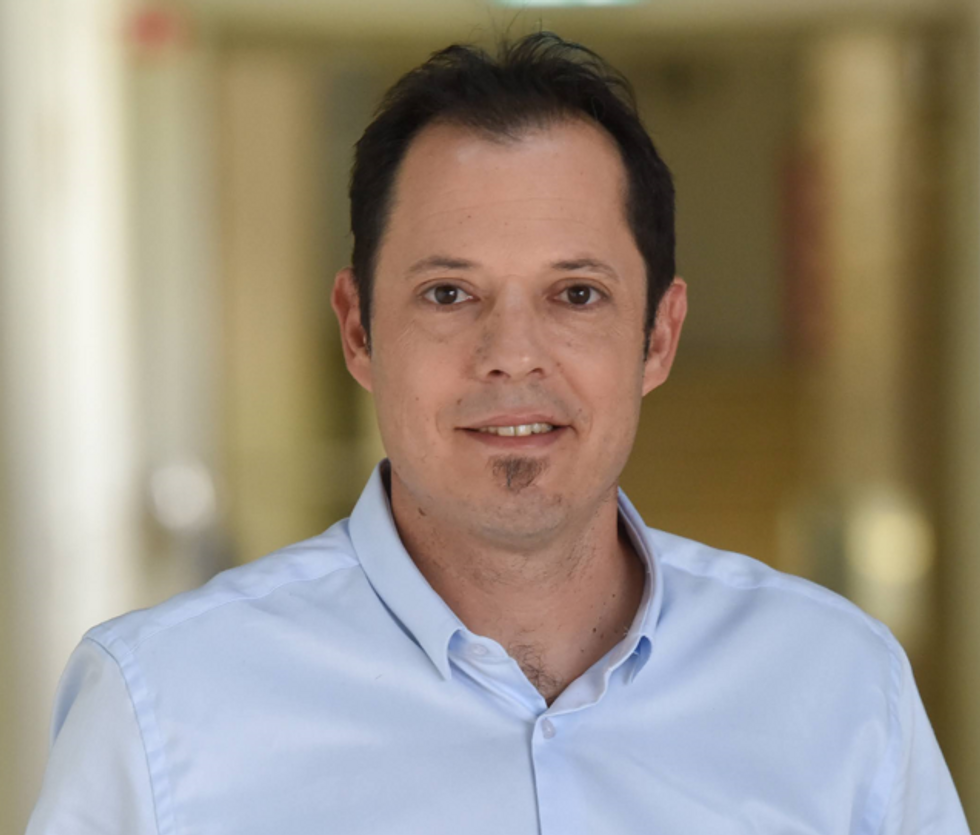
Yosi Shamay, Cancer Nanomedicine and Nanoinformatics researcher at the Technion Israel Institute of Technology
For the past four or five years, antibody-drug conjugates (ADCs) - a cancer drug where you have an antibody conjugated to a toxin - have been used only in patients with specific cancers that display high expression of a target protein, for example HER2-positive breast cancer. But in 2022, there have been clinical trials where ADCs have shown remarkable results in patients with low expression of HER2, which is something we never expected to see.
In July 2022, AstraZeneca published the results of a clinical trial, which showed that an ADC called trastuzumab deruxtecan can offer a very big survival benefit to breast cancer patients with very little expression of HER2, levels so low that they would be borderline undetectable for a pathologist. They got a strong survival signal for patients with very aggressive, metastatic disease.
I think this is very interesting and important because it means that it might pave the way to include more patients in clinical trials looking at ADCs for other cancers, for example lymphoma, colon cancer, lung cancers, even if they have low expression of the protein target. It also holds implications for CAR-T cells - where you genetically engineer a T cell to attack the cancer - because the concept is very similar. If we now know that an ADC can have a survival benefit, even in patients with very low target expression, the same might be true for T cells.
Look back further: Breakthroughs of 2021
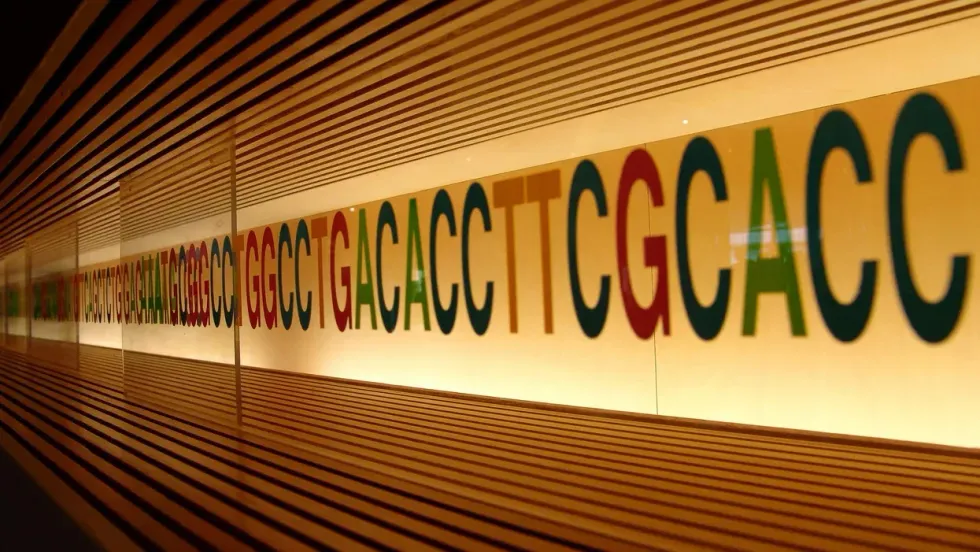
https://leaps.org/6-biotech-breakthroughs-of-2021-that-missed-the-attention-they-deserved/
Clever Firm Predicts Patients Most at Risk, Then Tries to Intervene Before They Get Sicker
Health firm Populytics tracks and analyzes patient data, and makes care suggestions based on that data.
The diabetic patient hit the danger zone.
Ideally, blood sugar, measured by an A1C test, rests at 5.9 or less. A 7 is elevated, according to the Diabetes Council. Over 10, and you're into the extreme danger zone, at risk of every diabetic crisis from kidney failure to blindness.
In three months of working with a case manager, Jen's blood sugar had dropped to 7.2, a much safer range.
This patient's A1C was 10. Let's call her Jen for the sake of this story. (Although the facts of her case are real, the patient's actual name wasn't released due to privacy laws.).
Jen happens to live in Pennsylvania's Lehigh Valley, home of the nonprofit Lehigh Valley Health Network, which has eight hospital campuses and various clinics and other services. This network has invested more than $1 billion in IT infrastructure and founded Populytics, a spin-off firm that tracks and analyzes patient data, and makes care suggestions based on that data.
When Jen left the doctor's office, the Populytics data machine started churning, analyzing her data compared to a wealth of information about future likely hospital visits if she did not comply with recommendations, as well as the potential positive impacts of outreach and early intervention.
About a month after Jen received the dangerous blood test results, a community outreach specialist with psychological training called her. She was on a list generated by Populytics of follow-up patients to contact.
"It's a very gentle conversation," says Cathryn Kelly, who manages a care coordination team at Populytics. "The case manager provides them understanding and support and coaching." The goal, in this case, was small behavioral changes that would actually stick, like dietary ones.
In three months of working with a case manager, Jen's blood sugar had dropped to 7.2, a much safer range. The odds of her cycling back to the hospital ER or veering into kidney failure, or worse, had dropped significantly.
While the health network is extremely localized to one area of one state, using data to inform precise medical decision-making appears to be the wave of the future, says Ann Mongovern, the associate director of Health Care Ethics at the Markkula Center for Applied Ethics at Santa Clara University in California.
"Many hospitals and hospital systems don't yet try to do this at all, which is striking given where we're at in terms of our general technical ability in this society," Mongovern says.
How It Happened
While many hospitals make money by filling beds, the Lehigh Valley Health Network, as a nonprofit, accepts many patients on Medicaid and other government insurances that don't cover some of the costs of a hospitalization. The area's population is both poorer and older than national averages, according to the U.S. Census data, meaning more people with higher medical needs that may not have the support to care for themselves. They end up in the ER, or worse, again and again.
In the early 2000s, LVHN CEO Dr. Brian Nester started wondering if his health network could develop a way to predict who is most likely to land themselves a pricey ICU stay -- and offer support before those people end up needing serious care.
Embracing data use in such specific ways also brings up issues of data security and patient safety.
"There was an early understanding, even if you go back to the (federal) balanced budget act of 1997, that we were just kicking the can down the road to having a functional financial model to deliver healthcare to everyone with a reasonable price," Nester says. "We've got a lot of people living longer without more of an investment in the healthcare trust."
Popultyics, founded in 2013, was the result of years of planning and agonizing over those population numbers and cost concerns.
"We looked at our own health plan," Nester says. Out of all the employees and dependants on the LVHN's own insurance network, "roughly 1.5 percent of our 25,000 people — under 400 people — drove $30 million of our $130 million on insurance costs -- about 25 percent."
"You don't have to boil the ocean to take cost out of the system," he says. "You just have to focus on that 1.5%."
Take Jen, the diabetic patient. High blood sugar can lead to kidney failure, which can mean weekly expensive dialysis for 20 years. Investing in the data and staff to reach patients, he says, is "pennies compared to $100 bills."
For most doctors, "there's no awareness for providers to know who they should be seeing vs. who they are seeing. There's no incentive, because the incentive is to see as many patients as you can," he says.
To change that, first the LVHN invested in the popular medical management system, Epic. Then, they negotiated with the top 18 insurance companies that cover patients in the region to allow access to their patient care data, which means they have reams of patient history to feed the analytics machine in order to make predictions about outcomes. Nester admits not every hospital could do that -- with 52 percent of the market share, LVHN had a very strong negotiating position.
Third party services take that data and churn out analytics that feeds models and care management plans. All identifying information is stripped from the data.
"We can do predictive modeling in patients," says Populytics President and CEO Gregory Kile. "We can identify care gaps. Those care gaps are noted as alerts when the patient presents at the office."
Kile uses himself as a hypothetical patient.
"I pull up Gregory Kile, and boom, I see a flag or an alert. I see he hasn't been in for his last blood test. There is a care gap there we need to complete."
"There's just so much more you can do with that information," he says, envisioning a future where follow-up for, say, knee replacement surgery and outcomes could be tracked, and either validated or changed.
Ethical Issues at the Forefront
Of course, embracing data use in such specific ways also brings up issues of security and patient safety. For example, says medical ethicist Mongovern, there are many touchpoints where breaches could occur. The public has a growing awareness of how data used to personalize their experiences, such as social media analytics, can also be monetized and sold in ways that benefit a company, but not the user. That's not to say data supporting medical decisions is a bad thing, she says, just one with potential for public distrust if not handled thoughtfully.
"You're going to need to do this to stay competitive," she says. "But there's obviously big challenges, not the least of which is patient trust."
So far, a majority of the patients targeted – 62 percent -- appear to embrace the effort.
Among the ways the LVHN uses the data is monthly reports they call registries, which include patients who have just come in contact with the health network, either through the hospital or a doctor that works with them. The community outreach team members at Populytics take the names from the list, pull their records, and start calling. So far, a majority of the patients targeted – 62 percent -- appear to embrace the effort.
Says Nester: "Most of these are vulnerable people who are thrilled to have someone care about them. So they engage, and when a person engages in their care, they take their insulin shots. It's not rocket science. The rocket science is in identifying who the people are — the delivery of care is easy."
In The Fake News Era, Are We Too Gullible? No, Says Cognitive Scientist
Cognitive scientist Hugo Mercier says the real challenge is not fighting fake news, but figuring out "how to make it easier for people who say correct things to convince people."
One of the oddest political hoaxes of recent times was Pizzagate, in which conspiracy theorists claimed that Hillary Clinton and her 2016 campaign chief ran a child sex ring from the basement of a Washington, DC, pizzeria.
To fight disinformation more effectively, he suggests, humans need to stop believing in one thing above all: our own gullibility.
Millions of believers spread the rumor on social media, abetted by Russian bots; one outraged netizen stormed the restaurant with an assault rifle and shot open what he took to be the dungeon door. (It actually led to a computer closet.) Pundits cited the imbroglio as evidence that Americans had lost the ability to tell fake news from the real thing, putting our democracy in peril.
Such fears, however, are nothing new. "For most of history, the concept of widespread credulity has been fundamental to our understanding of society," observes Hugo Mercier in Not Born Yesterday: The Science of Who We Trust and What We Believe (Princeton University Press, 2020). In the fourth century BCE, he points out, the historian Thucydides blamed Athens' defeat by Sparta on a demagogue who hoodwinked the public into supporting idiotic military strategies; Plato extended that argument to condemn democracy itself. Today, atheists and fundamentalists decry one another's gullibility, as do climate-change accepters and deniers. Leftists bemoan the masses' blind acceptance of the "dominant ideology," while conservatives accuse those who do revolt of being duped by cunning agitators.
What's changed, all sides agree, is the speed at which bamboozlement can propagate. In the digital age, it seems, a sucker is born every nanosecond.
The Case Against Credulity
Yet Mercier, a cognitive scientist at the Jean Nicod Institute in Paris, thinks we've got the problem backward. To fight disinformation more effectively, he suggests, humans need to stop believing in one thing above all: our own gullibility. "We don't credulously accept whatever we're told—even when those views are supported by the majority of the population, or by prestigious, charismatic individuals," he writes. "On the contrary, we are skilled at figuring out who to trust and what to believe, and, if anything, we're too hard rather than too easy to influence."
He bases those contentions on a growing body of research in neuropsychiatry, evolutionary psychology, and other fields. Humans, Mercier argues, are hardwired to balance openness with vigilance when assessing communicated information. To gauge a statement's accuracy, we instinctively test it from many angles, including: Does it jibe with what I already believe? Does the speaker share my interests? Has she demonstrated competence in this area? What's her reputation for trustworthiness? And, with more complex assertions: Does the argument make sense?
This process, Mercier says, enables us to learn much more from one another than do other animals, and to communicate in a far more complex way—key to our unparalleled adaptability. But it doesn't always save us from trusting liars or embracing demonstrably false beliefs. To better understand why, leapsmag spoke with the author.
How did you come to write Not Born Yesterday?
In 2010, I collaborated with the cognitive scientist Dan Sperber and some other colleagues on a paper called "Epistemic Vigilance," which laid out the argument that evolutionarily, it would make no sense for humans to be gullible. If you can be easily manipulated and influenced, you're going to be in major trouble. But as I talked to people, I kept encountering resistance. They'd tell me, "No, no, people are influenced by advertising, by political campaigns, by religious leaders." I started doing more research to see if I was wrong, and eventually I had enough to write a book.
With all the talk about "fake news" these days, the topic has gotten a lot more timely.
Yes. But on the whole, I'm skeptical that fake news matters very much. And all the energy we spend fighting it is energy not spent on other pursuits that may be better ways of improving our informational environment. The real challenge, I think, is not how to shut up people who say stupid things on the internet, but how to make it easier for people who say correct things to convince people.
"History shows that the audience's state of mind and material conditions matter more than the leader's powers of persuasion."
You start the book with an anecdote about your encounter with a con artist several years ago, who scammed you out of 20 euros. Why did you choose that anecdote?
Although I'm arguing that people aren't generally gullible, I'm not saying we're completely impervious to attempts at tricking us. It's just that we're much better than we think at resisting manipulation. And while there's a risk of trusting someone who doesn't deserve to be trusted, there's also a risk of not trusting someone who could have been trusted. You miss out on someone who could help you, or from whom you might have learned something—including figuring out who to trust.
You argue that in humans, vigilance and open-mindedness evolved hand-in-hand, leading to a set of cognitive mechanisms you call "open vigilance."
There's a common view that people start from a state of being gullible and easy to influence, and get better at rejecting information as they become smarter and more sophisticated. But that's not what really happens. It's much harder to get apes than humans to do anything they don't want to do, for example. And research suggests that over evolutionary time, the better our species became at telling what we should and shouldn't listen to, the more open to influence we became. Even small children have ways to evaluate what people tell them.
The most basic is what I call "plausibility checking": if you tell them you're 200 years old, they're going to find that highly suspicious. Kids pay attention to competence; if someone is an expert in the relevant field, they'll trust her more. They're likelier to trust someone who's nice to them. My colleagues and I have found that by age 2 ½, children can distinguish between very strong and very weak arguments. Obviously, these skills keep developing throughout your life.
But you've found that even the most forceful leaders—and their propaganda machines—have a hard time changing people's minds.
Throughout history, there's been this fear of demagogues leading whole countries into terrible decisions. In reality, these leaders are mostly good at feeling the crowd and figuring out what people want to hear. They're not really influencing [the masses]; they're surfing on pre-existing public opinion. We know from a recent study, for instance, that if you match cities in which Hitler gave campaign speeches in the late '20s through early '30s with similar cities in which he didn't give campaign speeches, there was no difference in vote share for the Nazis. Nazi propaganda managed to make Germans who were already anti-Semitic more likely to express their anti-Semitism or act on it. But Germans who were not already anti-Semitic were completely inured to the propaganda.
So why, in totalitarian regimes, do people seem so devoted to the ruler?
It's not a very complex psychology. In these regimes, the slightest show of discontent can be punished by death, or by you and your whole family being sent to a labor camp. That doesn't mean propaganda has no effect, but you can explain people's obedience without it.
What about cult leaders and religious extremists? Their followers seem willing to believe anything.
Prophets and preachers can inspire the kind of fervor that leads people to suicidal acts or doomed crusades. But history shows that the audience's state of mind and material conditions matter more than the leader's powers of persuasion. Only when people are ready for extreme actions can a charismatic figure provide the spark that lights the fire.
Once a religion becomes ubiquitous, the limits of its persuasive powers become clear. Every anthropologist knows that in societies that are nominally dominated by orthodox belief systems—whether Christian or Muslim or anything else—most people share a view of God, or the spirit, that's closer to what you find in societies that lack such religions. In the Middle Ages, for instance, you have records of priests complaining of how unruly the people are—how they spend the whole Mass chatting or gossiping, or go on pilgrimages mostly because of all the prostitutes and wine-drinking. They continue pagan practices. They resist attempts to make them pay tithes. It's very far from our image of how much people really bought the dominant religion.
"The mainstream media is extremely reliable. The scientific consensus is extremely reliable."
And what about all those wild rumors and conspiracy theories on social media? Don't those demonstrate widespread gullibility?
I think not, for two reasons. One is that most of these false beliefs tend to be held in a way that's not very deep. People may say Pizzagate is true, yet that belief doesn't really interact with the rest of their cognition or their behavior. If you really believe that children are being abused, then trying to free them is the moral and rational thing to do. But the only person who did that was the guy who took his assault weapon to the pizzeria. Most people just left one-star reviews of the restaurant.
The other reason is that most of these beliefs actually play some useful role for people. Before any ethnic massacre, for example, rumors circulate about atrocities having been committed by the targeted minority. But those beliefs aren't what's really driving the phenomenon. In the horrendous pogrom of Kishinev, Moldova, 100 years ago, you had these stories of blood libel—a child disappeared, typical stuff. And then what did the Christian inhabitants do? They raped the [Jewish] women, they pillaged the wine stores, they stole everything they could. They clearly wanted to get that stuff, and they made up something to justify it.
Where do skeptics like climate-change deniers and anti-vaxxers fit into the picture?
Most people in most countries accept that vaccination is good and that climate change is real and man-made. These ideas are deeply counter-intuitive, so the fact that scientists were able to get them across is quite fascinating. But the environment in which we live is vastly different from the one in which we evolved. There's a lot more information, which makes it harder to figure out who we can trust. The main effect is that we don't trust enough; we don't accept enough information. We also rely on shortcuts and heuristics—coarse cues of trustworthiness. There are people who abuse these cues. They may have a PhD or an MD, and they use those credentials to help them spread messages that are not true and not good. Mostly, they're affirming what people want to believe, but they may also be changing minds at the margins.
How can we improve people's ability to resist that kind of exploitation?
I wish I could tell you! That's literally my next project. Generally speaking, though, my advice is very vanilla. The mainstream media is extremely reliable. The scientific consensus is extremely reliable. If you trust those sources, you'll go wrong in a very few cases, but on the whole, they'll probably give you good results. Yet a lot of the problems that we attribute to people being stupid and irrational are not entirely their fault. If governments were less corrupt, if the pharmaceutical companies were irreproachable, these problems might not go away—but they would certainly be minimized.
